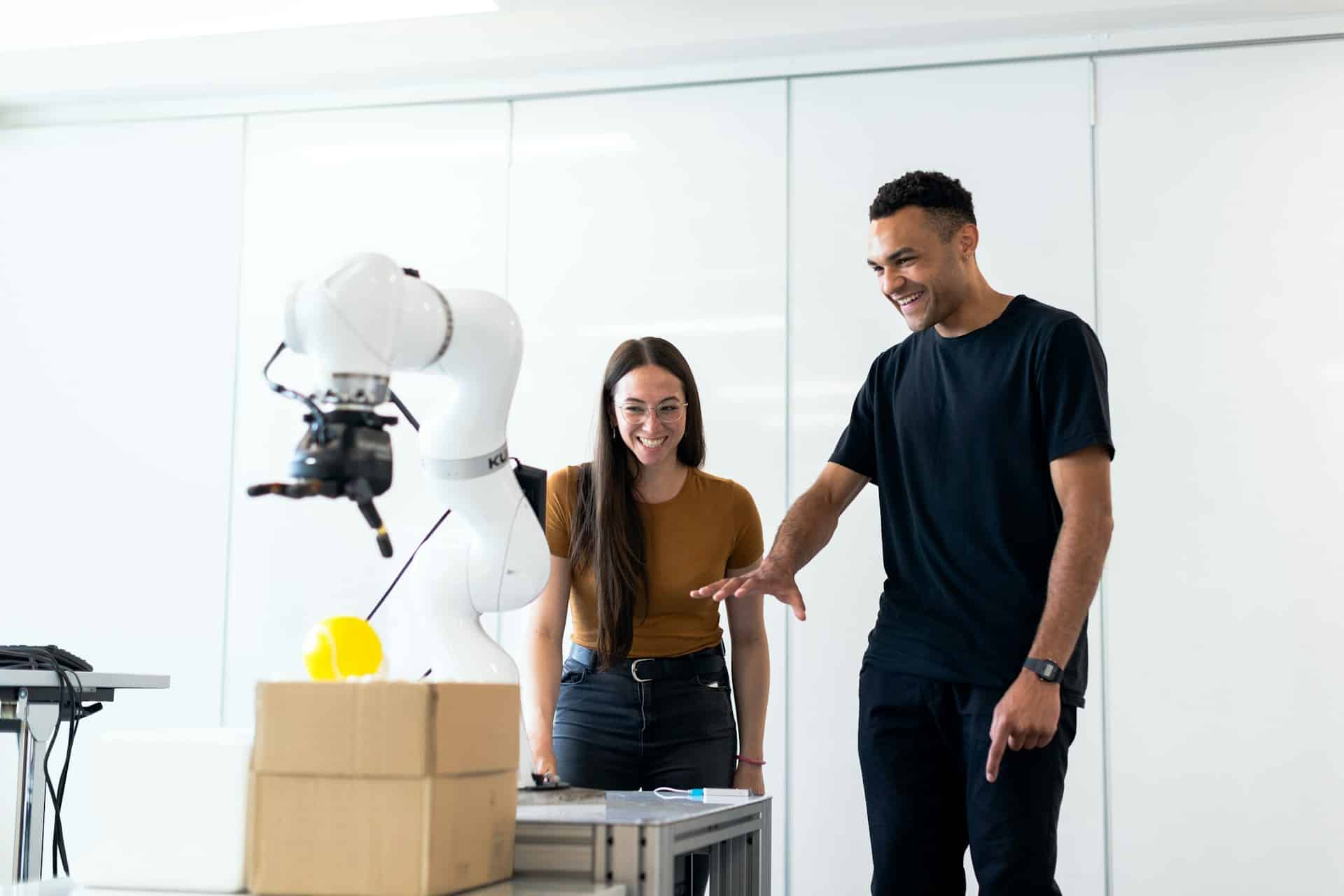Can AI and Robotics Combine to Offer New Solutions in Personalized Home Care Services?

In recent years, the interplay between robotics and artificial intelligence (AI) has begun to significantly transform various sectors of our society. Healthcare is a prime example. Our aging population, combined with rising healthcare costs, has created an urgent need for innovative and efficient care solutions. Robotics and AI, with their ability to collect, analyze, and utilize vast amounts of data, are emerging as potential game changers in this field. Specifically, they are poised to revolutionize how we deliver home care services to the elderly and other patients in need of assistance. In this article, let’s delve into how AI and robotics can synergize to transform personalized home care services by focusing on three primary areas: medical assistance, day-to-day tasks, and emotional support.
1. Medical Assistance
Robotic technology combined with AI has the potential to dramatically improve medical care for patients in their homes. These technologies can assist in monitoring vital signs, managing medication, and even performing certain clinical procedures.
Dans le meme genre : Manifesting joy: discover your dream box today
Healthcare robots, equipped with AI capabilities, can be programmed to take on routine tasks, such as taking blood pressure or glucose levels, and transmit the results directly to healthcare providers. This real-time data transmission can help physicians keep a close eye on their patients’ health development and intervene promptly if needed.
Moreover, these robots can be programmed to remind patients to take their medication at the prescribed times, thereby reducing the risk of missed doses. Some advanced models are even capable of administering insulin or other injections, eliminating the need for a home nurse or family member to perform this task.
Lire également : How Is Machine Learning Being Used to Optimize Renewable Energy Grid Integration?
AI-driven robots also offer enormous potential for telemedicine. Physicians can remotely control them to conduct physical exams or other clinical procedures. This functionality could be particularly beneficial for patients living in remote areas or those who are unable to travel due to health conditions.
2. Assistance in Daily Life
Beyond medical care, AI and robotics can greatly improve the quality of life for individuals who need assistance with daily tasks. From helping with mobility to ensuring regular meals, automation plays a crucial role in maintaining a healthy and balanced lifestyle.
Robotic mobility aids, such as walking assist devices and automated wheelchairs, can help patients move around their homes more easily and independently. AI technology can enhance these devices by adapting them to the individual’s specific needs and habits, thus promoting a greater level of autonomy.
Moreover, robots can be programmed to help with tasks such as cooking, cleaning, and shopping. They can follow recipes, clean up spills, and even navigate to the local grocery store. AI’s ability to learn and adapt can improve the efficiency of these robots over time, making them even more helpful for individuals with physical limitations.
3. Emotional Support and Companionship
The importance of emotional and social support in healthcare cannot be overstated. AI and robotics can help meet this need by providing companionship and emotional assistance to patients who may feel isolated or anxious.
One example of this is the growing use of "companion robots," which are designed to provide emotional support and companionship to the elderly and other individuals. These robots can participate in interactive games, remind patients of important events, and even carry on simple conversations. They can also be programmed to detect signs of distress or cognitive decline, notifying healthcare providers when necessary.
AI takes the effectiveness of these robots a step further with machine learning capabilities. They can adapt to the patient’s mood and personality over time, tailoring their interactions to best suit the patient’s emotional needs.
4. The Role of AI and Robotics in Disease Prevention
AI and robotics also have immense potential in disease prevention. For example, they can help patients maintain a healthy lifestyle by reminding them to exercise, monitoring their diet, or encouraging positive habits.
AI algorithms can analyze data from a patient’s activity levels, diet, and medical history to predict potential health risks. This information can be used to create personalized health plans and preventative measures.
Robotic technology can also assist in carrying out these plans. For example, a robot might remind a patient to do their daily exercise routine, or prepare meals according to a prescribed diet.
AI and robotics, therefore, can combine to offer a personalized, comprehensive approach to disease prevention that is tailored to each individual’s needs and lifestyle.
5. The Potential Challenges
Despite the promising benefits, integrating AI and robotic technology into home healthcare does present certain challenges. Privacy and safety are major concerns. The continuous monitoring and data collection by these devices raise questions about data security and patient privacy. Moreover, the physical safety of patients interacting with robots must be ensured.
There are also cost and accessibility issues to consider. Not all patients may be able to afford these technologies. Policymakers and healthcare providers will need to work together to ensure that these innovative solutions are accessible to all who need them.
In the face of these challenges, ongoing research and development, coupled with thoughtful policy-making, will be crucial. The potential of AI and robotics to revolutionize home healthcare is enormous and, with careful planning and implementation, they promise a future where personalized and efficient care is a reality for all.
6. The Current State of Research and Development
Research and development (R&D) in the field of AI and robotics in healthcare is growing rapidly. Many of the possibilities discussed in this article are currently being explored and tested in real-world scenarios. For instance, Google Scholar and PubMed Crossref feature numerous studies focusing on the application of these technologies in elderly care and home care.
AI algorithms and machine learning techniques are being perfected to make care robots more responsive and adaptable. For instance, robots are being trained to recognize subtle changes in a patient’s mood or health status, enabling them to respond appropriately in real time.
Moreover, R&D efforts are aiming at enhancing the integration of robotics and AI with existing healthcare systems. A critical aspect of this is the development of secure and efficient data exchange protocols. This will allow robots to share patient data with healthcare providers seamlessly and securely, thereby improving decision making and patient outcomes.
However, it is important to remember that the development of AI and robotics for home healthcare is a complex and long-term endeavor. It involves not only technological innovation but also the formulation of new regulatory guidelines, ethical standards, and care protocols. The ultimate goal is to ensure that these technologies enhance care services while maintaining patient safety and dignity.
7. Conclusion
The convergence of AI and robotics holds immense potential for transforming home healthcare services. These technologies can help address many of the challenges faced by our aging population, including the need for personalized, efficient, and cost-effective care.
AI and robotics can offer medical assistance, help with daily tasks, provide emotional support, and even contribute to disease prevention. Moreover, they can enable real-time monitoring and decision-making, leading to better patient outcomes.
However, realizing this vision will require concerted efforts in research and development, policy making, and healthcare practice. It will also necessitate addressing challenges related to privacy, safety, cost, and accessibility.
In the final analysis, AI and robotics represent a new frontier in healthcare. As the integration of robotics and AI advances, we can look forward to a future where home care is not just about managing illness, but also promoting health, independence, and quality of life for older adults. With careful planning and implementation, we can leverage these technologies to create a new paradigm of personalized, efficient, and compassionate care.
In the words of a reputed original blog, "The future of healthcare lies not in building bigger hospitals, but in leveraging big data, AI, and robotics to deliver care where it’s needed most – in our homes".
